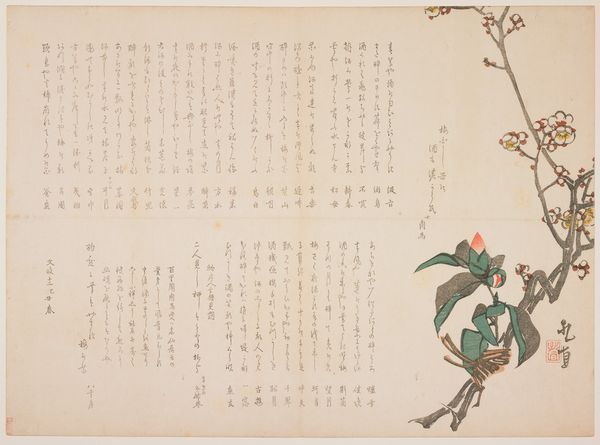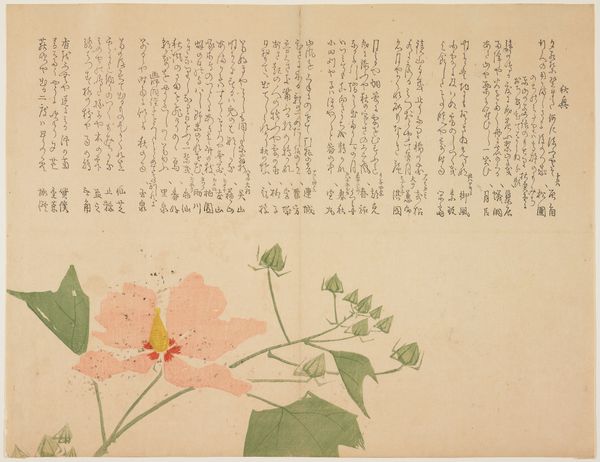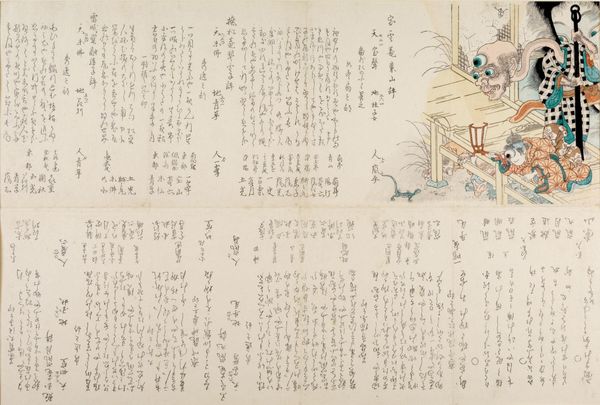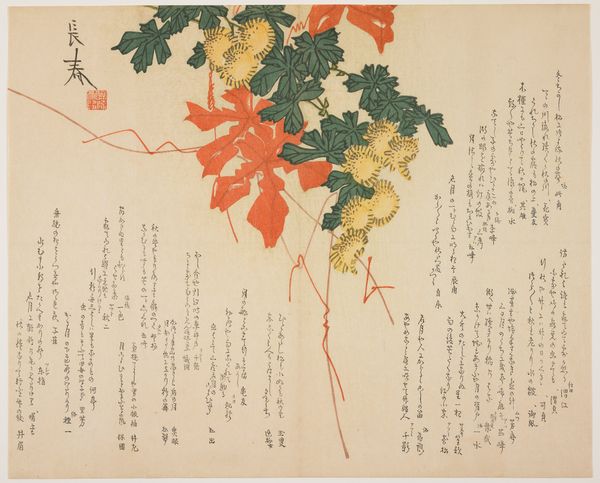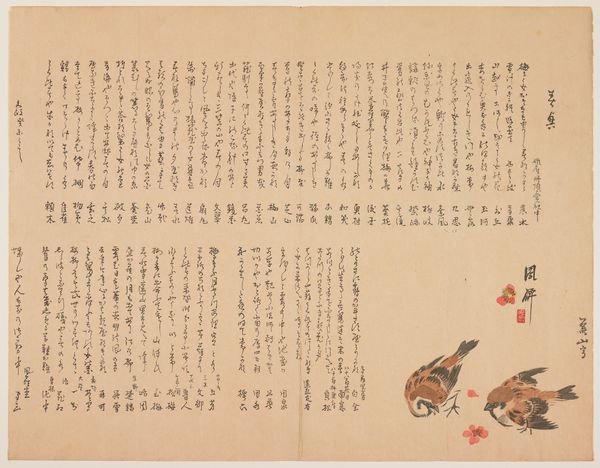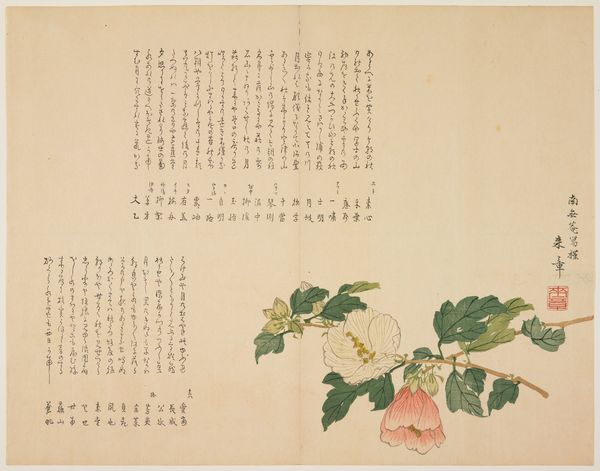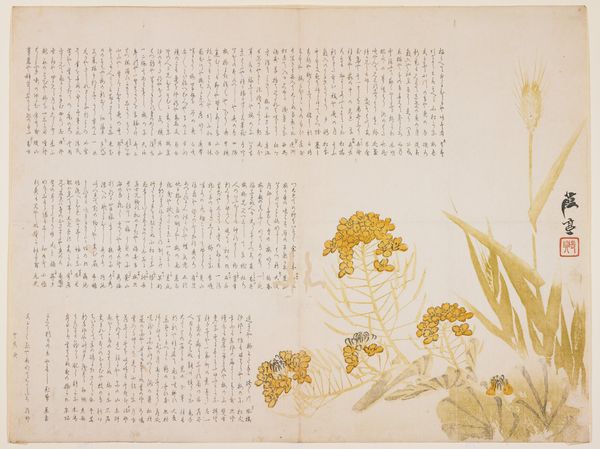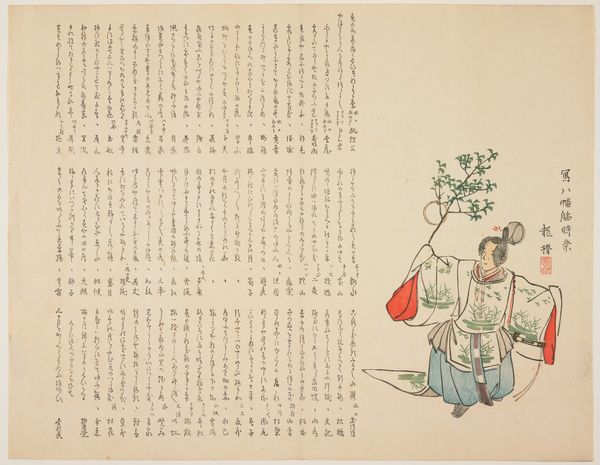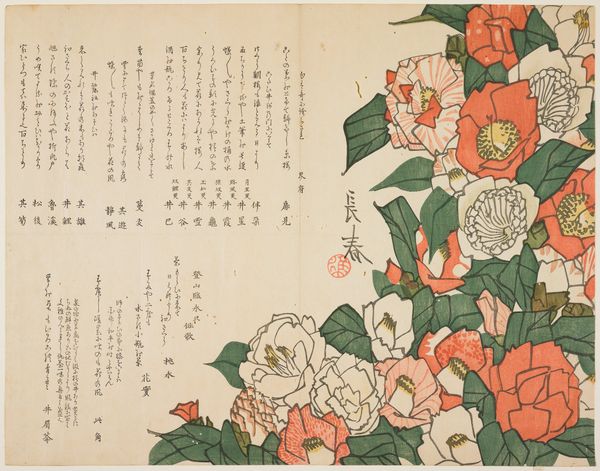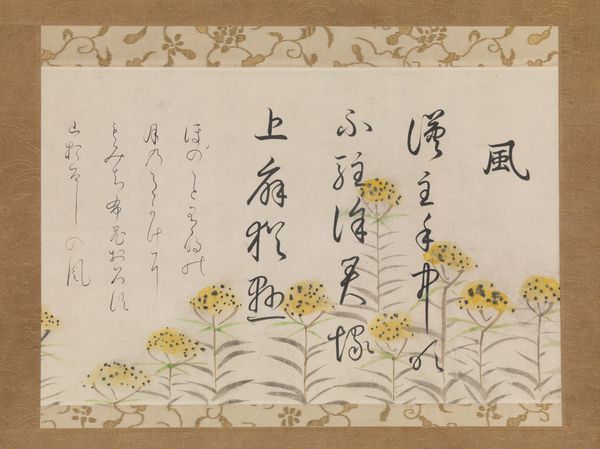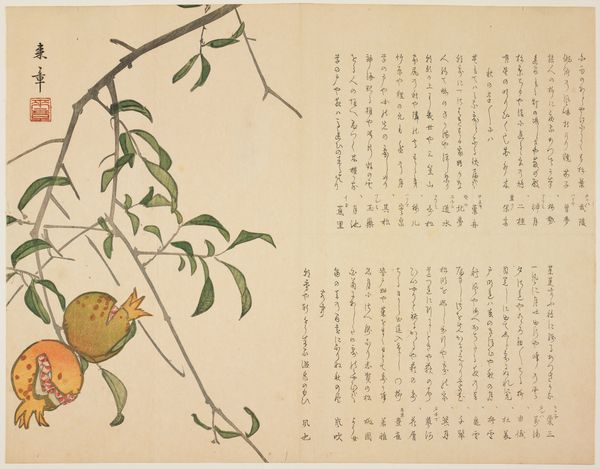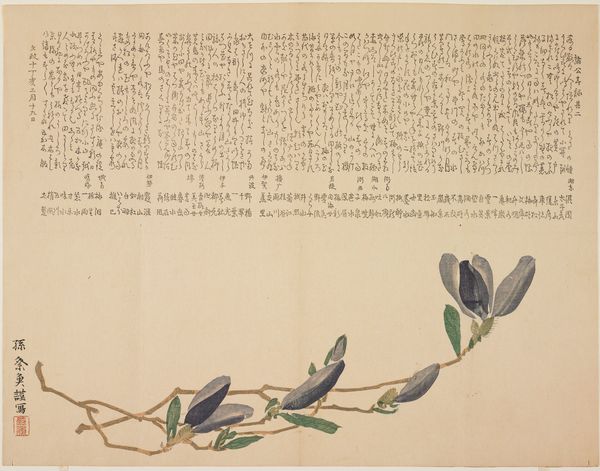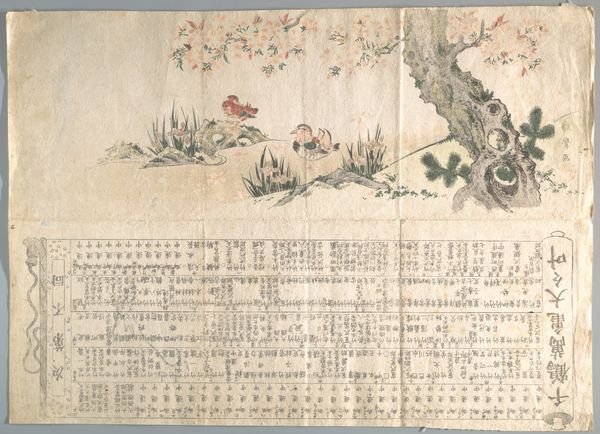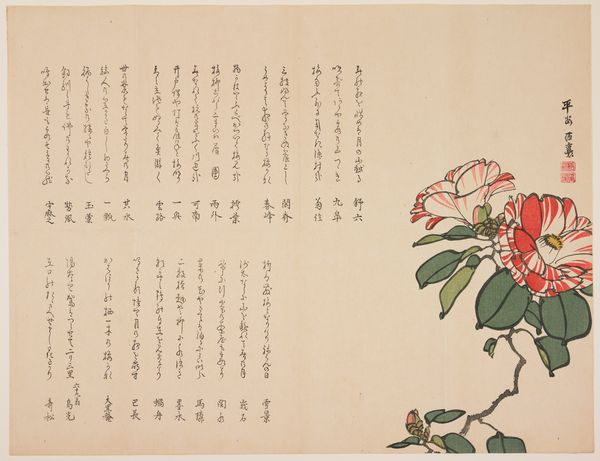
print, paper, ink, woodblock-print
# print
#
asian-art
#
landscape
#
ukiyo-e
#
paper
#
ink
#
woodblock-print
Dimensions: 15 x 19 1/4 in. (38.1 x 48.9 cm) (image, sheet)
Copyright: Public Domain
Editor: This captivating woodblock print, titled '(Flowering rose of sharon)', was created by Murakami Shōdō around 1818 to 1829. What strikes me most is the blend of floral imagery and dense text; it looks less like a simple landscape and more like a document or announcement. How do you interpret this piece, given its unique combination of image and text? Curator: Let's consider the materiality of this work. Woodblock prints were a key means of disseminating information and imagery in Edo-period Japan. The labour involved—from the artist’s design to the carver’s skill to the printer's execution—is substantial. Does that inform your view on its potential function beyond "art"? Editor: Absolutely, knowing the labour involved transforms how I see it. The print's function couldn't simply be decorative if the material process of production demands this level of craftmanship. I’m thinking that it probably served a social purpose for disseminating information, poetry, or even advertising. Curator: Precisely. Think about the interplay between the textual content and the visual representation of the flowering rose of Sharon. Were these accessible materials for the masses, or was the access gated in any way? Editor: It's fascinating how this challenges our typical understanding of what constitutes "art." Considering the medium and its process forces us to question the original audience and purpose. Maybe it was for a limited educated audience, like a poetic society. Curator: It could also serve to examine labour, not simply from the perspective of artistic expression, but also in terms of accessibility, considering those who engaged with its themes might not be part of its elite sphere. Editor: I see what you mean; thinking about this piece through a materialist lens really opens up new ways to understand its place and function in society. It's a long way from just seeing flowers! Curator: Indeed, by emphasizing materiality and production, we gain insights into its social context and possible avenues for materialist studies in relation to its craftsmanship.
Comments
No comments
Be the first to comment and join the conversation on the ultimate creative platform.
